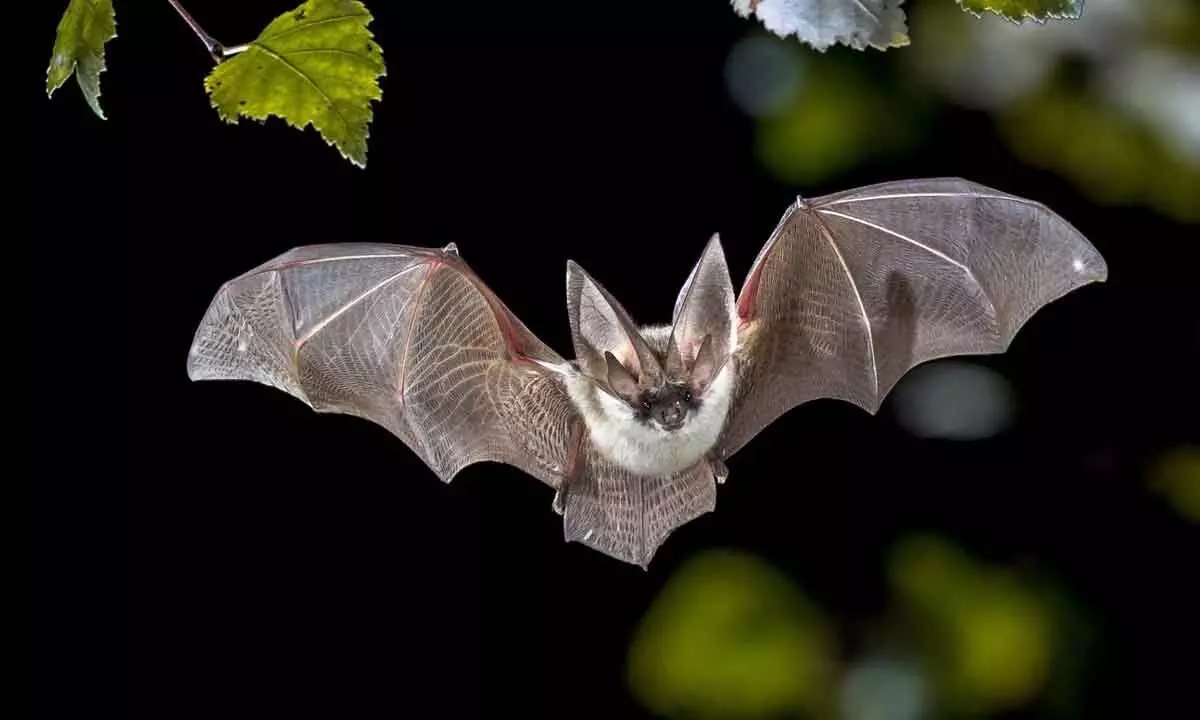Live
- They always want me to win, and now I feel lucky to have been offered a story like ‘Zebra’: Satyadev Kancharana
- ‘Democracy first, humanity first’: PM Modi in Guyana's parliament on two countries' similarities
- PKL Season 11: Telugu Titans register third straight win to top standings
- Is Pollution Contributing to Your COPD?
- NASA Unveils Underwater Robots for Exploring Jupiter's Moons
- Additional Central forces arrive in violence-hit Manipur
- AR Rahman and Saira Banu’s Divorce: Legal Insights into Common Issues in Bollywood Marriages
- 82.7 pc work completed in HPCL Rajasthan Refinery area: official
- Curfew relaxation extended in 5 Manipur districts on Friday
- Tab scam prompts Bengal govt to adopt caution over fund disbursement
Just In
Coronaviruses detected in UK bats


So far, the danger’s minimal but we need to know more about viruses that can spread to humans
London: Most emerging infectious diseases are caused by zoonotic pathogens – viruses and bacteria which circulate in wild and domestic animals but are also capable of infecting humans.
Examples of diseases caused by zoonotic pathogens include Ebola, Middle Eastern Respiratory Syndrome (MERS) and bird flu. Certain bat species act as a reservoir for a range of viruses that can jump to humans – for example, the closest relatives of SARS-CoV-2 (the virus that causes COVID) circulate in bats of the Rhinolophus genus.
However, we don’t have a good understanding of the diversity of viruses circulating in bat populations in most parts of the world. We also don’t have a good idea of the number of bat viruses that could jump into humans in the future. This motivated new research, in which we searched for RNA viruses circulating in UK bats. RNA viruses, of which SARS-CoV-2 is one, are generally considered to be the most worrying zoonotic threats. We also evaluated the zoonotic potential of some of the viruses we discovered. Reassuringly, we didn’t identify any viruses currently capable of infecting humans – but one virus may need only a few mutations to do so. Continually monitoring bats and other wildlife is therefore important to protect us against future zoonotic threats.
Studying UK bats
From the faecal samples analysed, we could piece together nine complete coronavirus genomes, including two new species – of which one is closely related to the coronavirus that causes MERS. In the two species of British Rhinolophus bats we also found four sarbecoviruses, the same group of viruses as SARS-CoV-2. Next we tested whether the coronaviruses we recovered could infect humans. To do this, we synthesised artificial sequences of the spike proteins – proteins on the surface of the virus which attach to host cells to enable cell entry – and integrated them into a “pseudovirus”. These constructs are totally safe as they cannot replicate, but still teach us about the ability of a virus to bind to and enter different cells.
Of all the coronaviruses we tested, one sarbecovirus was capable of entering human cells by binding the ACE2 receptor, the receptor SARS-CoV-2 uses to enter human cells. But this occurred only in human cells artificially manipulated in the lab to express an overabundance of ACE2 receptors, not at ACE2 levels found naturally in the human body. This means none of the coronaviruses we found in British bats can currently infect humans, though one of the sarbecoviruses may acquire the potential to do so in the future. This sarbecovirus is probably only a few mutations away from a virus that could bind to human ACE2 receptors effectively enough to infect people. Our study likely underestimates the true diversity of coronaviruses circulating in UK bats since we sequenced only 48 samples and not all bats are infected by all viruses at all times. Also, we could only recover viruses shed in the guts of bats, since we analysed faeces.
Bats reservoirs for zoonotic viruses
It has been speculated that bats may harbour more pathogens than other mammals due to their remarkable longevity (they can live up to around 40 years in the wild), high metabolic rate necessary for flight, and unusual immune systems (for example, they tend to tolerate rather than fight off viral infections). Though, the large number of zoonotic viruses carried by bats may be primarily due to their high species diversity. Bats comprise 22 per cent of the 6,649 known mammalian species, each carrying their own pathogens. So monitoring for viruses shouldn’t only focus on bats, but include other groups of mammals such as rodents, carnivores and ungulates (mammals with hooves).
Improved global surveillance would require four pillars spanning pathogen diversity circulating in humans, domestic animals, wildlife and the wider environment. It’s possible COVID was caused by a zoonotic pathogen, and it’s possible it wasn’t. We don’t have conclusive evidence either way, and debate will continue.
Regardless, we need programmes that allow us to flag zoonotic threats early. This could inform policies aimed at reducing humans’ exposure to concerning emerging pathogens in animals. We should ideally identify pathogens with zoonotic potential before they have a chance to jump into humans and cause outbreaks. At that point, it’s probably too late. But it’s not realistic to survey all wild animal populations everywhere. Given the vast diversity of viruses in circulation in wildlife, the next pressing challenge is how best to prioritise surveillance efforts. Even with the best surveillance scheme imaginable, it may not be possible to prevent all future epidemics and pandemics. But improved characterisation of pathogens with zoonotic potential would still allow preemptive design and testing of vaccines and drug compounds against the most threatening zoonotic pathogens. This would greatly increase our pandemic preparedness, if and when it came to the worst.
(Writers work at UCL - London’s Global University; The Conversation)

© 2024 Hyderabad Media House Limited/The Hans India. All rights reserved. Powered by hocalwire.com






